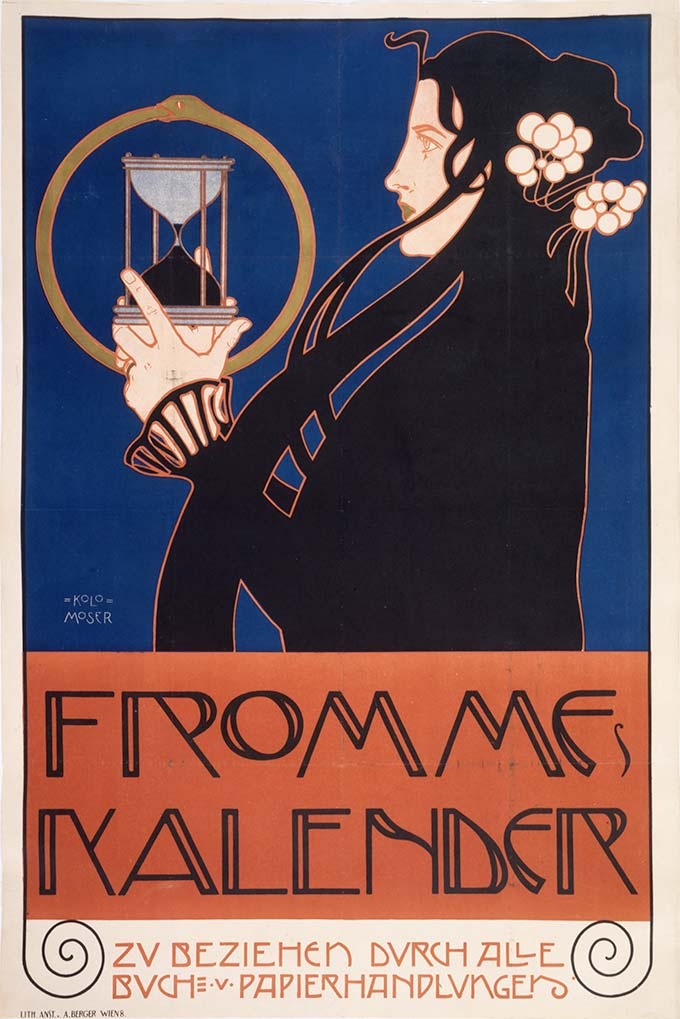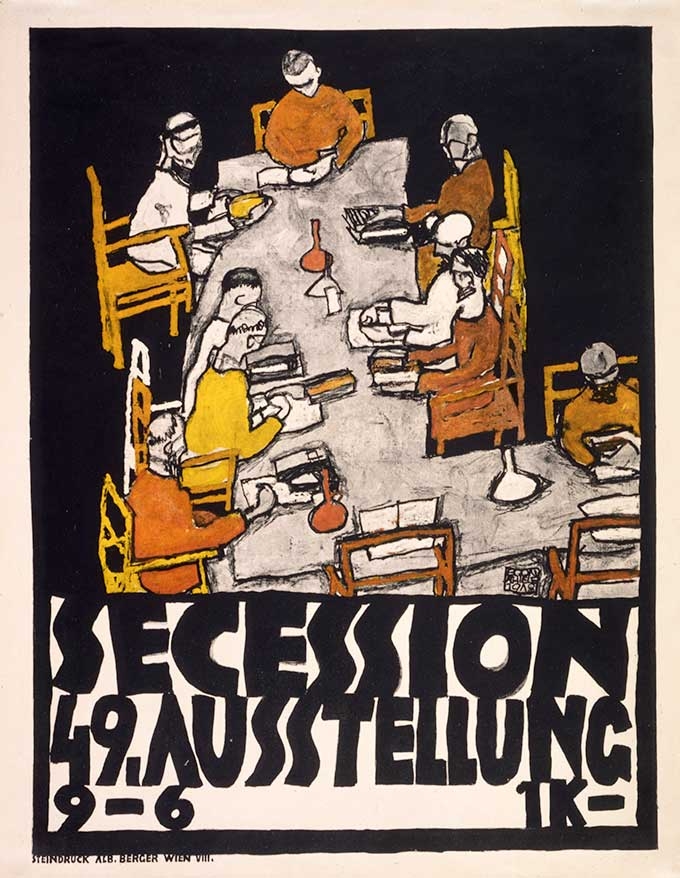Bloom and Doom: Visual Expressions and Reform in Vienna 1900
–
“To each age its art, to art its freedom.” This proclamation emblazoned across the façade of the Viennese Secession Building encapsulates the artistic search for what constituted the modern at the turn of the twentieth century in Vienna. Why does the brief flowering of the visual arts in Vienna—a world that came to an abrupt end with the outbreak of the First World War and the dissolution of the Austro-Hungarian Empire that followed—still feel relevant more than one hundred years later? The controversies and publicity surrounding the restitution of Gustav Klimt’s Portrait of Adele Bloch-Bauer I (“The Woman in Gold”) to the sitter’s heirs do not tell the entire story.

Koloman Moser, Frommes Calendar Poster, 1899, colored lithograph. Courtesy of the Sabarsky Foundation.
Co-curated by Assistant Professor of History of Art and Architecture Erin Sassin and the students in her spring 2016 course “Bloom and Doom: Visual Expressions and Reform in Vienna circa 1900,” this exhibition features lesser known works by Egon Schiele and Gustav Klimt, along with prints, drawings, and posters created by other members of the Viennese Secession. Bloom and Doom illuminates how these individuals challenged the artistic and social establishment by rejecting the traditional academic system and turning to new means of expression, often attempting to reunify art and life in a “total work of art,” before giving into cultural pessimism and withdrawing from public life.

Egon Schiele, 49th Secession Exhibition Poster, 1918, colored lithograph, 26 ¾ x 21 inches. Courtesy of the Sabarsky Foundation.
Bloom and Doom, which will be on view in the museum’s Overbrook Gallery through Sunday, December 11, is the final installment in a series of three exhibitions organized in collaboration with the Sabarsky Foundation. As part of this three-year initiative, the Foundation has made works from its large collection of German and Austrian art available to Middlebury students and faculty so that a class taught in the spring semester would have a chance to work directly with the art and have a voice in the curation of an exhibition to open the following fall.
Students were intrinsically involved in the planning of this exhibition, from devising the layout and color scheme to drafting wall labels. The students also curated a digital exhibition entitled “Virtual Vienna,” which will allow visitors to explore the relationship between the built environment of Vienna circa 1900 and the larger artistic and cultural scene.
